Blackhead film mask recipes at home

The mask-film is especially loved by the owners of oily skin with easily clogged pores. In the event that you have to use it regularly, it would be much wiser to learn how to make the substance yourself.
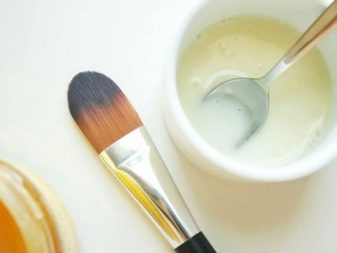

Peculiarities
A homemade film mask from blackheads differs from other varieties of this cosmetic product in its structure. The sticky substance, drying, turns into a thin film, which, when removed, "takes" with it the dirt and the contents of the pores. The mask can be removed from the skin even without water, which can be a real lifesaver in some emergency situations.
Convenient and what to apply the film even with painted eyes, since when you remove it, the makeup of this area will not be affected in any way. The film mask is easily created at home from components that are always present in the refrigerator. Homemade cosmetic is suitable for owners of any skin type.
Even in cases where deep cleansing of the pores is simply not required, this mask will "erase" dullness and fatigue, refresh and nourish the dermis.
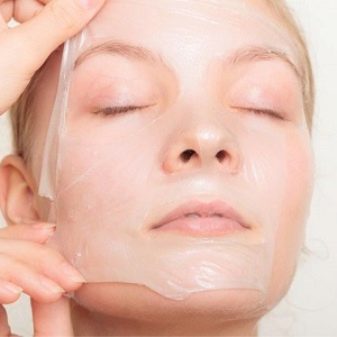
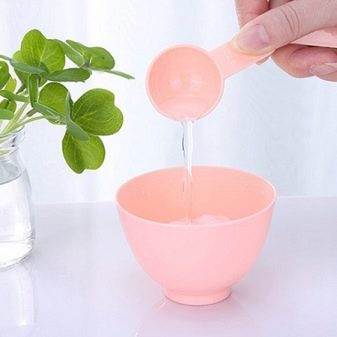
Benefit and harm
Homemade film mask effectively cleanses pores from dirt and grease, as well as removes fragments of dead skin. It has a gentle scrub effect and is therefore suitable for dry skin as well. In addition, the black varieties of these substances slightly whiten the skin, making freckles and age spots less bright. Basically, regular use of homemade film masks makes it possible to remove fine wrinkles and capillary mesh. Naturally, the use of additional components gives the cosmetic product moisturizing, nourishing and refreshing properties.
A film mask may be harmful if it is used despite contraindications. For example, we are talking about rosacea or the abundant presence of spider veins. Film formulations can negatively affect the condition of too thin and sensitive skin, even causing it to dry out. Contraindications for use also include capillaries located close to the surface and unhealed wounds.


Efficiency
Judging by the reviews, homemade film masks are very effective, but only if the skin condition is not too neglected. It is noted that the face becomes smooth and velvety, its tone improves, and the uncoupled pores become visually less noticeable. Due to the regular elimination of dead particles, accompanied by moisturizing of the integument, the skin ceases to peel off.
Many girls also note that sebum production decreases, but only if the procedure is carried out regularly.
It should also be mentioned that homemade film masks are a worthy alternative to purchased products.
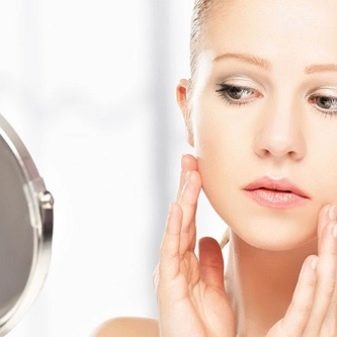
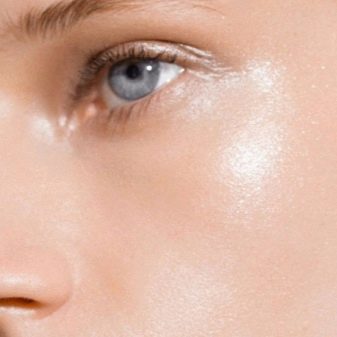
How to make a mask at home?
Numerous simple recipes allow you to make your own film mask.
Activated carbon
The black mask made with activated carbon is very popular. To create it, half a tablet will be enough, which will need to be crushed to a powder state. Black grains are mixed with half a teaspoon of gelatin and kneaded with a small amount of milk - about one teaspoon. The mixture must be stirred until smooth, warmed up in the microwave for about 15 seconds and, after waiting until it cools down to a comfortable temperature, apply to the problem area. You can remove the mask only after it has completely hardened.
This recipe can be modified depending on the needs and capabilities. For example, to treat the entire face, you will need to increase the number of components: take a whole tablet, a teaspoon of gelatin and a tablespoon of milk. By the way, ordinary cold water can become an alternative liquid.
In the absence of a microwave oven, the mixture is heated qualitatively in a water bath.
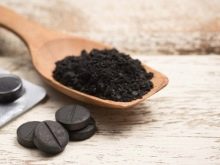


From gelatin
Eliminating the addition of activated carbon, it will still be possible to create a good film mask. For its preparation, three tablespoons of milk are used to dilute a teaspoon of gelatin. The substance is mixed until the lumps disappear, warmed up for about 15 seconds in the microwave and applied to the skin. The film is also removed only after final drying. Add the ability to nourish the skin to a cleansing mask with the help of fruit or vegetable juice.
In this case, the same teaspoon of gelatin is dissolved in a third of a glass of juice by heating over low heat. The substance cools down a little and is distributed over the surface of the face. Having removed the already dried film, the skin will need to be smeared with a nourishing cream. The juice for this mask should be selected according to the condition and needs of the skin. For example, peach juice and squeeze from cabbage or carrots can help to get rid of dryness and shells.
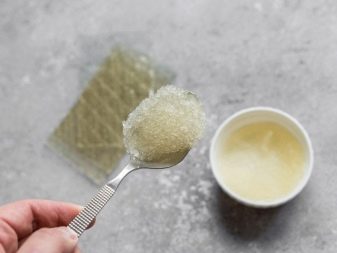

Oily skin reacts well to the effects of tomato, lemon, grapefruit and currant juices. For normal skin, in principle, you can use any liquid you want, but the skin will get the most benefit from watermelon or cranberry. When preparing a gelatin-based mask, green tea, known for its antioxidant properties, can also be used as the main component. To prepare the mask, you will need to mix a third of a glass of strongly brewed drink, a third of a glass of chamomile broth and a tablespoon of gelatin. It's good if you can add a tablespoon of cucumber juice and aloe juice to the solution.
It needs to be made clear that chamomile, green tea and gelatin are mixed first. Then this combination should be warmed up on a steam bath until all the grains have dispersed. Only after waiting for the mask to cool, you can enrich it with cucumber and aloe juice. Another option for a gelatin mask involves the use of sour cream, which provides the skin with additional moisture. At the first stage of work, a tablespoon of gelatin is poured with 60 milliliters of heated water. Then the swollen mixture is combined with a tablespoon of fat sour cream and a couple of drops of an oil solution of vitamin E. The finished mask is distributed over the skin and left until completely solidified.
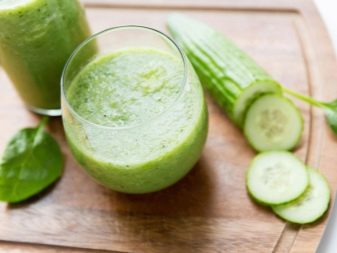

From an egg
To make the simplest egg mask, ordinary protein will be enough, which is beaten a little with a fork and applied to problem areas. Experts recommend sticking pieces of napkin on top of the egg layer, and when they become completely wet, apply the rest of the substance. After removing the dried film, washing your face is optional, but you can use a moisturizer. An interesting solution is to apply the remaining yolk after the protein mask. You can also combine an egg with aloe juice - such a mask is quite effective in eliminating acne.
The mixture is prepared from one protein and a couple of tablespoons of aloe juice. It is recommended to first beat the first ingredient, and then combine it with the second, then gently apply on the face and leave to dry. It will be more convenient to remove the film with a damp sponge. Again, it is recommended to complete the procedure by applying the remaining yolk to the face.
You can also mix the egg with milk or lemon juice.
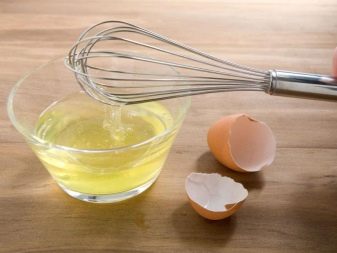
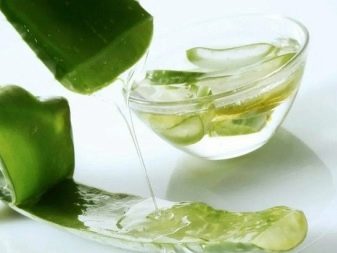
Application rules
Before applying a homemade film mask to your skin, the surface must be cleaned of dirt, cosmetics and excess sebum. For this purpose, a regular cleanser is suitable. To enhance the effect of the mask, you can also scrub the skin and then steam the face. The sticky substance is most conveniently applied with a special flat brush or sponge. Movements should be made from the bottom up, that is, from the chin to the forehead and along the massage lines.
It is better not to use the areas around the eyes and around the lips. It is also important to leave a gap around the eyebrows and along the hairline. The thickness of the substance should be approximately 1 millimeter. Too thin film will tear quickly, and too thick will take a long time to dry.

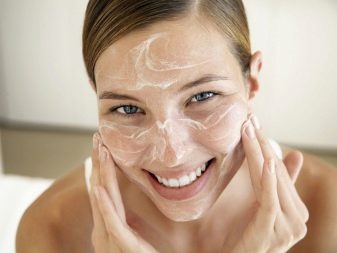
Having distributed the sticky substance over the skin, it is necessary to take a horizontal position and try to relax the facial muscles. Typically, the average exposure time for a home cosmetic product is 20 minutes.
The mask is removed when it is completely dry... You can determine its condition by touching your face with your finger - if it does not stick, then the procedure is considered complete. The mask should be removed in the same way as applied, that is, from the bottom up. To do this, the film gently clings with your fingertips and pulls up. The cleansed face is wiped with tonic and treated with cream. You can also immediately apply a mask to tighten the pores. You can use a film mask depending on your skin condition. In principle, three times a week are considered the upper limit of the norm.
For sensitive skin, use once a week or 3 times in 2 weeks.
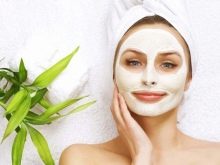
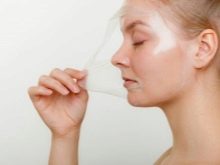
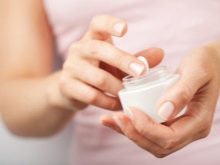
For information on how to make a mask-film from blackheads with activated charcoal and gelatin at home, see the next video.









It didn't work out for me.
Why, Marceline?